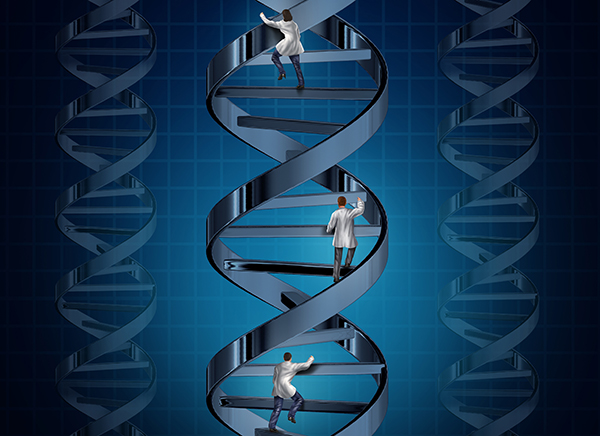The first proof of an effective gene therapy for a metabolic disease of the liver is reported in patients with Crigler-Najjar syndrome. No serious adverse events were reported in the phase I/II study evaluating the safety and efficacy of a gene therapy for patients with Crigler–Najjar syndrome. In addition to confirming the safety and tolerance for the treatment in all patients (five women aged 21 to 30 years) the findings report sustained efficacy in the three patients treated with the highest dose.
The trial demonstrates the possibility of restoring expression of liver enzyme UGT1A1 by using gene therapy in cases of Crigler-Najjar syndrome. The gene construct (GNT 0003) combines an AAV8 vector with a copy of gene uridine diphosphoglucuronate glucuronosyltransferase 1A1 (UGT1A1.)
These results are reported in The New England Journal of Medicine, in the paper, “Gene Therapy in Patients with the Crigler–Najjar Syndrome.”
“We have been involved in the care of patients with Crigler Najjar disease for more than 30 years,” noted Philippe Labrune, MD, Hôpital Béclère, Clamart, France. “As the PI of this trial, and the oldest physician of this group, I consider these first results to be exciting, encouraging, and even moving. We do hope, and we are confident, that the results of the pivotal part will confirm the efficacy of this gene therapy. Providing a treatment for Crigler Najjar disease could be the beginning of new adventures for other hepatic metabolic diseases.”
Crigler-Najjar syndrome is a rare, autosomal recessive, inherited disorder in which patients have a deficiency or absence of activity of UDP-glucuronosyltransferase, an enzyme required for glucuronidation of unconjugated bilirubin in the liver. This is due to a deficiency of the gene uridine diphosphoglucuronate glucuronosyltransferase 1A1 (UGT1A1).
The disease is characterized by hyperbilirubinemia (the increased concentration of unconjugated bilirubin is the cause of the disease manifestation.) If not treated quickly, the buildup of bilirubin can cause significant neurological damage and become fatal. At the current time, the only treatment is phototherapy of up to 12 hours per day or a liver transplant.
The results of the European gene therapy clinical trial, sponsored by the non-profit organization Généthon, involving clinicians from France, Italy, and the Netherlands. The candidate drug medicine designed by Généthon lowered bilirubin levels to below the toxic threshold with a single intravenous injection to such an extent that three patients treated with the highest dose have been able to stop using phototherapy for the last 18 months or more.
The trial demonstrated restored expression of the UGT1A1 gene and a large reduction in bilirubin levels (to 149 μmol/l on average as compared to 351 μmol/l before treatment), which, in the three patients treated with the highest dose, has stayed below the toxic level after phototherapy was stopped for 80 weeks or more following treatment. No major side effects have been observed. The only symptoms were changes in hepatic enzymes and headaches which were resolved. This is the first proof of the efficacy of a gene therapy in a metabolic disease of the liver.
“We are excited with the first results of this trial,” noted Lorenzo D’Antiga, MD, director of general pediatrics, Hospital Papa Giovanni XXIII Bergamo, Italy. “After haemophilia, Crigler Najjar syndrome is the next liver disease treated by gene therapy. In this trial we managed to restore the synthesis of a non-secreted protein whose deficiency causes severe jaundice in affected patients. We look forward to continuing the next phases of this project and considering also other liver diseases amenable to be cured by our strategy.”
The aim of the pivotal part of the study, started last January, is to confirm the observed effect in a larger number of patients including children aged 10 years and over, the age at which the liver matures, and if the results are conclusive to enable a product license application at the French and European authorities. The goal of the Phase I/II clinical trial is to evaluate the candidate gene therapy medicine GNT 0003 in 17 patients suffering from a severe form of Crigler-Najjar syndrome.
The trial started in 2017 in four centers in Europe: France (Hôpital Béclère in Clamart), Italy (Azienda Ospedaliera Papa Giovanni XXIII in Bergamo and Hôpital Federico II), and Netherlands (Academic Medical Center in Amsterdam).



